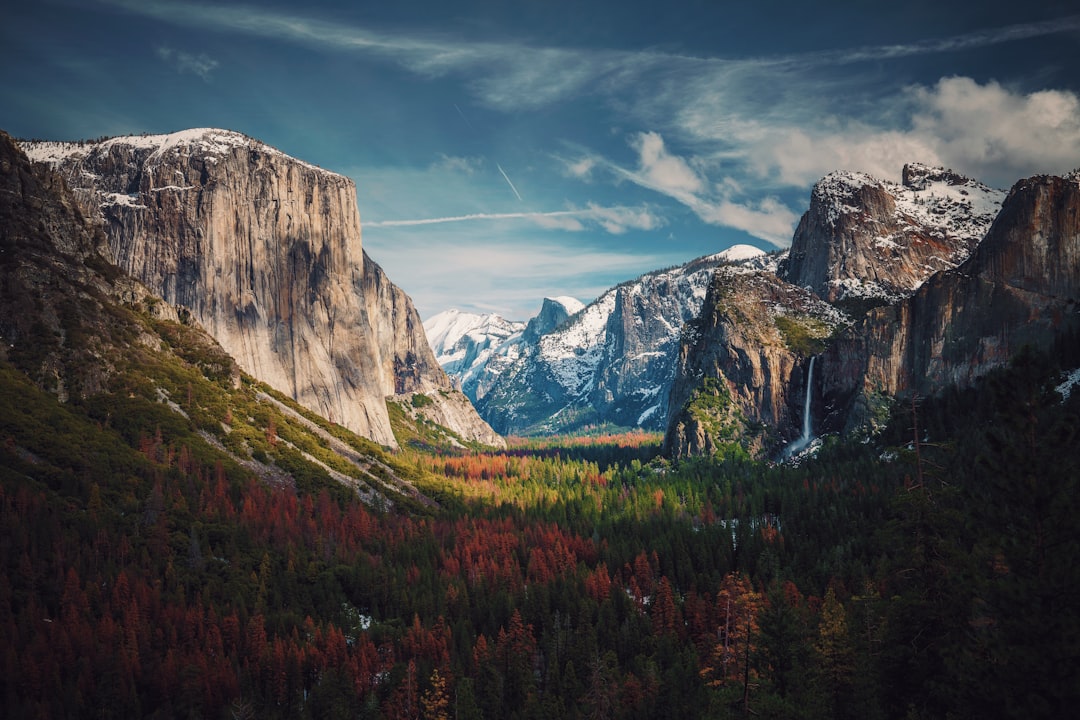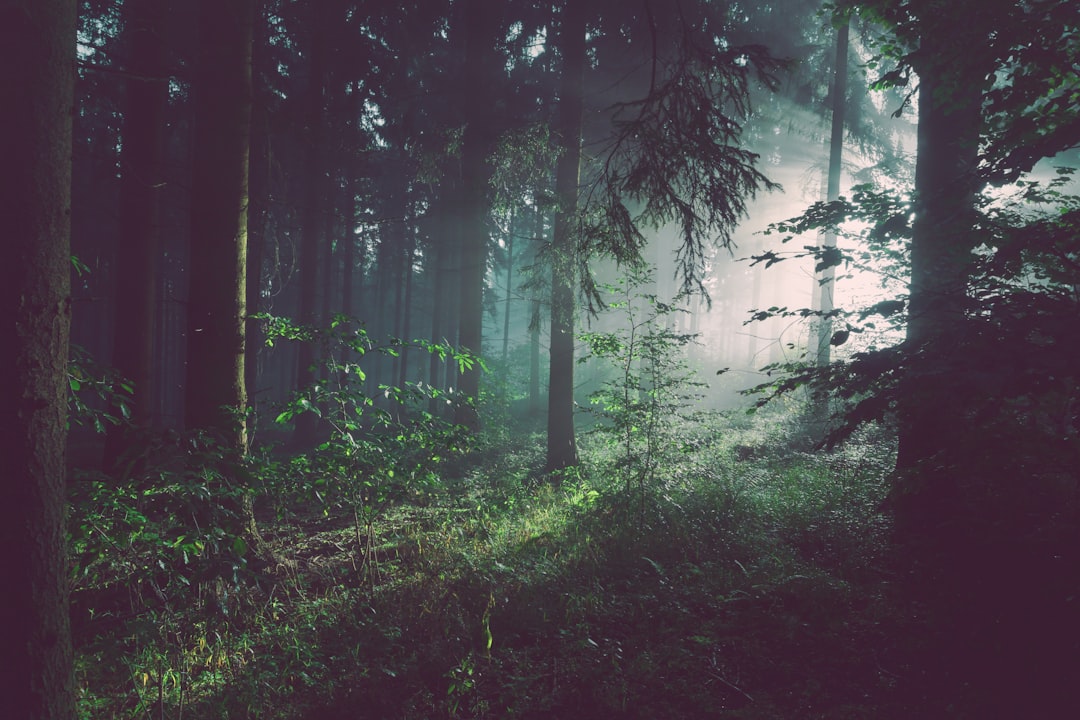Support our educational content for free when you purchase through links on our site. Learn more
Bigfoot Uncovered: 12 Legendary Facts & Sightings You Can’t Miss 🦶 (2025)
Imagine trekking through the dense forests of the Pacific Northwest, the mist curling around ancient trees, when suddenly you spot enormous footprints—24 inches long, with mysterious toe impressions. Could it be the elusive Bigfoot? For decades, this towering, hairy giant has captured imaginations, sparked heated debates, and inspired countless expeditions. But what’s the truth behind the legend? Is Bigfoot a misunderstood animal, a cultural myth, or something far stranger?
In this comprehensive 2025 guide, we at History Hidden™ peel back the layers of folklore, science, and pop culture to bring you 12 fascinating facts and sightings that define the Bigfoot phenomenon. From indigenous legends to cutting-edge drone searches, from infamous hoaxes to genuine mystery, we leave no stone unturned. Whether you’re a skeptic or a believer, this article will equip you with everything you need to know about the world’s most famous cryptid—and maybe even how to spot one yourself!
Key Takeaways
- Bigfoot’s roots run deep in indigenous folklore and early settler tales, blending myth with cultural reverence.
- The Patterson-Gimlin film and Jerry Crew footprints remain the most iconic evidence fueling the legend.
- Despite thousands of reports, scientific consensus views Bigfoot as a myth or misidentification, though the mystery endures.
- Modern technology like drones, thermal cameras, and AI audio analysis is revolutionizing Bigfoot research.
- Bigfoot’s cultural impact spans movies, music festivals, and even brand names, making it a pop culture icon.
- For aspiring hunters, trail cameras and footprint casting kits are essential gear to join the quest.
Ready to dive deeper or gear up for your own Bigfoot adventure? Check out these top trail cameras perfect for cryptid hunting:
Join the hunt and uncover the legend for yourself!
Table of Contents
- Quick Tips and Facts About Bigfoot 🦶
- The Mysterious Origins and History of Bigfoot Sightings 🕵️♂️
- What Is Bigfoot? A Deep Dive Into the Legend and Description 🌲
- Top 7 Most Famous Bigfoot Sightings and Encounters 📅
- Bigfoot Evidence: Footprints, Audio, and Video – Fact or Fiction? 🎥👣
- Scientific Perspectives on Bigfoot: Myth, Misidentification, or Mystery? 🔬
- [Bigfoot in Popular Culture: Movies, TV Shows, and Viral Memes 🎬📺]
- [Cryptozoology and Bigfoot: The Search for the Elusive Creature 🔍]
- [Bigfoot Hoaxes and Debunked Claims: Separating Truth from Tall Tales 🕳️❌]
- [Bigfoot Habitats: Where Are These Creatures Supposed to Roam? 🌲🌄]
- [How to Spot Bigfoot: Tips for the Aspiring Sasquatch Hunter 🕵️♀️]
- [Bigfoot and Indigenous Legends: Cultural Significance and Stories 🌿]
- [Technology and Bigfoot Research: Drones, Thermal Cameras, and AI 🤖]
- [Bigfoot Tourism: Best Places to Visit for a Sasquatch Adventure 🏞️]
- [Conclusion: Why Bigfoot Continues to Captivate Our Imagination ✨]
- [Recommended Links for Bigfoot Enthusiasts 🔗]
- [Frequently Asked Questions (FAQ) About Bigfoot ❓]
- [Reference Links and Further Reading 📚]
Quick Tips and Facts About Bigfoot 🦶
Welcome to the wild world of Bigfoot, the legendary giant of North American forests! Before we trek deeper, here are some quick nuggets to get you started:
- Bigfoot, also known as Sasquatch, is described as a large, hairy, bipedal creature roaming mainly the Pacific Northwest.
- Sightings date back centuries, rooted in indigenous folklore and modern reports since the 1950s.
- Footprints can be up to 24 inches long and 8 inches wide — that’s a shoe size no one’s buying!
- The iconic Patterson-Gimlin film (1967) remains the most famous footage, sparking endless debate.
- Scientists generally regard Bigfoot as a myth or misidentification, but the legend persists with thousands of reported sightings.
- Bigfoot has inspired a subculture of enthusiasts called “Bigfooters” or “Squatchers,” who hunt, research, and celebrate the creature.
- The name “Bigfoot” was coined in 1958 after giant footprints were found in California.
For a fascinating dive into mysterious artifacts, check out our Crystal Skulls Origins: 13 Mysteries Unveiled in 2025 💎 — another legendary enigma that’ll keep you up at night!
Ready to unravel the hairy truth? Let’s go!
The Mysterious Origins and History of Bigfoot Sightings 🕵️♂️

Bigfoot isn’t just a modern myth — it’s a legend with deep roots in North American history and indigenous cultures.
Indigenous Legends and Early Accounts
- Tribes like the Yokuts, Cherokee, Lummi, and Iroquois have stories of giant, hairy beings — often called “Hairy Man,” Tsul ‘Kalu, or Genoskwa.
- The Yokuts petroglyphs at Painted Rock, estimated to be 1,000 years old, depict figures resembling Bigfoot.
- These legends often describe Bigfoot as a spirit guardian or forest giant, blending myth with reverence.
European Influence and Wild Man Folklore
- European settlers brought tales of “wild men” and hairy forest creatures, which merged with indigenous stories.
- The Bigfoot image evolved into a bipedal, ape-like giant, a hybrid of folklore and frontier imagination.
The Modern Bigfoot Era
- In 1958, Jerry Crew, a bulldozer operator in Humboldt County, California, found enormous footprints.
- Reporter Andrew Genzoli’s articles popularized the term “Bigfoot,” launching the creature into the national spotlight.
- Since then, thousands of sightings and reports have poured in, especially from the Pacific Northwest.
Bigfoot’s history is a fascinating blend of mythology, cultural storytelling, and modern mystery — a perfect cocktail for legend lovers!
What Is Bigfoot? A Deep Dive Into the Legend and Description 🌲
Let’s get to know Bigfoot beyond the rumors.
Physical Characteristics
- Height: Typically 6 to 9 feet tall; some claims go up to 15 feet!
- Build: Broad shoulders, long arms, no visible neck — think of a giant, shaggy forest hermit.
- Hair: Dark brown, black, or reddish hair covering the entire body.
- Eyes: Some reports mention glowing yellow or red eyes, though this is debated.
- Footprints: Enormous, often 24 inches long and 8 inches wide, with distinct toe impressions.
Behavior and Habits
- Bigfoot is said to be nocturnal and omnivorous, feeding on plants, berries, and small animals.
- Known for wood knocking (blowing on trees) and rock throwing as territorial signals.
- Often described as shy, avoiding humans but curious enough to be spotted.
Regional Names and Variants
- In Canada, Bigfoot is often called Sasquatch.
- Other regional names include Skunk Ape (Florida), Grassman (Ohio), and Honey Island Swamp Monster (Louisiana).
This creature is as much a cultural icon as it is a cryptid — a hairy enigma wrapped in forest shadows.
Top 7 Most Famous Bigfoot Sightings and Encounters 📅
Ready for some legendary encounters? Here are the top seven Bigfoot sightings that made history:
-
The Patterson-Gimlin Film (1967)
The most iconic footage ever captured — a 59.5-second video showing a large, hairy figure walking through Bluff Creek, California. Skeptics call it a hoax; believers swear it’s real.
Watch and decide for yourself! -
Jerry Crew Footprints (1958)
The footprints that coined the term “Bigfoot.” Crew’s casts of giant footprints in California sparked nationwide interest. -
Skookum Cast (2000)
A plaster cast of what some claim is a Bigfoot body imprint found in Washington’s Gifford Pinchot National Forest. The cast shows detailed anatomy, but skeptics remain unconvinced. -
The Ape Canyon Incident (1924)
Miners near Mount St. Helens reported being attacked by ape-like creatures, marking one of the earliest violent encounters. -
The Ohio Grassman Sightings
Multiple reports from Ohio describe a large, hairy creature roaming forests — a regional cousin of Bigfoot. -
The 2023 San Juan Mountains Video
A viral social media video from a train in Colorado showing a large, bipedal figure sparked fresh debate and renewed interest. -
The Honey Island Swamp Monster Reports
Louisiana’s swampy legend of a Bigfoot-like creature with a foul odor, blending local folklore and cryptid mystery.
These encounters fuel the legend and keep the hunt alive!
Bigfoot Evidence: Footprints, Audio, and Video – Fact or Fiction? 🎥👣
Bigfoot enthusiasts have amassed a mountain of evidence — but how much holds up?
Footprints and Casts
- Thousands of footprints have been reported, with casts showing dermal ridges and toe details.
- Some casts, like the Skookum cast, are touted as near-proof, but critics argue they could be natural impressions or hoaxes.
Audio Recordings
- Wood knocks, howls, and vocalizations have been recorded in Bigfoot hotspots.
- The Bigfoot Field Researchers Organization (BFRO) archives many such sounds, but scientific validation is lacking.
Photographs and Videos
- The Patterson-Gimlin film remains the most famous, but no other footage has matched its notoriety.
- Many photos and videos are blurry, grainy, or outright hoaxes.
Hair and DNA Samples
- Hair samples attributed to Bigfoot have mostly tested as known animals (bears, cows, horses).
- The controversial 2012 study by Melba Ketchum claimed Bigfoot DNA showed a human-primate hybrid, but it was widely criticized for poor methodology.
Scientific Scrutiny
- The FBI analyzed alleged Bigfoot hair in 1976 and found it belonged to deer family animals.
- Genetic studies by Oxford and Lausanne museums identified samples as common animals, not unknown primates.
While the evidence is tantalizing, no conclusive proof has emerged — yet the mystery endures!
Scientific Perspectives on Bigfoot: Myth, Misidentification, or Mystery? 🔬
What do the experts say? Let’s break down the scientific consensus and alternative views.
Mainstream Scientific View
- Bigfoot is generally considered a myth or misidentification of known animals, especially black bears.
- Ecological studies suggest the food supply and habitat could not support a large, undiscovered primate population.
- Most sightings are attributed to hoaxes, mistaken identity, or psychological phenomena.
Notable Scientific Opinions
- Primatologist Jane Goodall once expressed openness to the idea but acknowledged the lack of physical evidence.
- Anthropologist John Napier declared in 1973 that science must conclude Bigfoot does not exist without hard evidence.
- A 2009 Journal of Biogeography study modeled Bigfoot sightings and found they correlated with black bear populations.
Fringe and Alternative Theories
- Some propose Bigfoot is a relict hominid or a surviving prehistoric ape.
- Others suggest paranormal or supernatural explanations, including interdimensional beings or cryptids beyond biology.
Why the Debate Persists
- The lack of definitive proof keeps Bigfoot in the realm of mystery and folklore.
- The cultural fascination and anecdotal reports fuel ongoing interest and research.
Science says: ❌ No concrete evidence yet.
Folklore says: ✅ The legend lives on.
Bigfoot in Popular Culture: Movies, TV Shows, and Viral Memes 🎬📺
Bigfoot isn’t just a cryptid — it’s a pop culture superstar!
Film and Television
- Movies like “Harry and the Hendersons” (1987) brought a lovable Bigfoot to mainstream audiences.
- Documentaries and reality shows such as “Finding Bigfoot” and “Mountain Monsters” have built dedicated fanbases.
- Bigfoot appears in horror films, cartoons, and even Marvel Comics as the superhero Sasquatch.
Music and Festivals
- The Sasquatch! Music Festival in Washington celebrates the legend with indie rock and arts.
- Bands and songs often reference Bigfoot, blending folklore with modern culture.
Advertising and Branding
- Bigfoot’s image is used by companies like Bigfoot Biomedical (diabetes management) and the monster truck Bigfoot.
- Sports teams, such as the former Seattle SuperSonics, have used Bigfoot-inspired mascots.
Internet and Memes
- Viral videos and memes keep Bigfoot trending, often humorously portraying the creature as shy, goofy, or elusive.
- Social media groups and forums create a vibrant community of “Squatchers” sharing stories and theories.
Bigfoot’s cultural footprint is as big as its legendary footprints!
Cryptozoology and Bigfoot: The Search for the Elusive Creature 🔍
Cryptozoology is the study of hidden or unknown animals — and Bigfoot is its poster child.
What Is Cryptozoology?
- A field blending folklore, anecdotal reports, and scientific inquiry to investigate creatures like Bigfoot, the Loch Ness Monster, and Chupacabra.
- Often dismissed by mainstream science but embraced by enthusiasts worldwide.
Bigfoot Research Organizations
- The Bigfoot Field Researchers Organization (BFRO) is the largest group dedicated to investigating sightings and evidence.
- The North American Wood Ape Conservancy (NAWAC) conducts field research and publishes findings.
Research Methods
- Field expeditions using trail cameras, audio recorders, and footprint casts.
- Analysis of hair, scat, and environmental DNA (eDNA).
- Public reports and interviews with witnesses.
Challenges Faced
- The vast, rugged habitats make fieldwork difficult.
- Hoaxes and false reports muddy the waters.
- Lack of physical specimens limits scientific acceptance.
Despite hurdles, cryptozoologists remain passionate, keeping the Bigfoot quest alive.
Bigfoot Hoaxes and Debunked Claims: Separating Truth from Tall Tales 🕳️❌
Not all that’s hairy is real! Bigfoot has been the subject of many hoaxes.
Famous Hoaxes
- Ray Wallace Footprints (1958): In 2002, Wallace’s family admitted he made giant footprints using carved wooden feet.
- Minnesota Iceman: A supposed frozen Bigfoot corpse later revealed as a latex prop.
- Rick Dyer’s Bigfoot Bodies: Multiple fake Bigfoot “bodies” were admitted hoaxes by Dyer.
- Tom Biscardi’s Capture Claims: Promised Bigfoot captures that never materialized.
Why Hoaxes Happen
- Desire for fame, money, or attention.
- To perpetuate the legend or prank enthusiasts.
- Sometimes genuine misidentifications or misunderstandings.
How to Spot a Hoax
- Lack of verifiable evidence or provenance.
- Overly staged photos or videos.
- Confessions or investigations exposing fraud.
While hoaxes complicate the Bigfoot story, they also highlight the human fascination with mystery and myth.
Bigfoot Habitats: Where Are These Creatures Supposed to Roam? 🌲🌄
If Bigfoot is out there, where does it live?
Primary Regions
- The Pacific Northwest (Washington, Oregon, British Columbia) is the hotspot for sightings.
- Other reported habitats include Northern California, Alaska, Michigan, and parts of the Appalachian Mountains.
Habitat Characteristics
- Dense forests with abundant food sources.
- Remote, rugged terrain with minimal human disturbance.
- Areas with plentiful water, wildlife, and shelter.
Environmental Considerations
- Large home ranges would be necessary to sustain a breeding population.
- Seasonal movements following food availability are hypothesized.
Map of Common Bigfoot Sightings (Summary Table)
| Region | Notable Features | Frequency of Sightings | Local Name(s) |
|---|---|---|---|
| Pacific Northwest | Dense coniferous forests, mountains | Very High | Sasquatch |
| Northern California | Redwood forests, river valleys | High | Bigfoot |
| Appalachians | Mixed hardwood forests, mountains | Moderate | Tsul ‘Kalu, Grassman |
| Florida Everglades | Swamps, wetlands | Low to Moderate | Skunk Ape |
| Louisiana Swamps | Swampy, bayous | Low | Honey Island Swamp Monster |
Whether you’re hiking the Cascades or exploring the Appalachians, keep your eyes peeled — you never know who’s watching!
How to Spot Bigfoot: Tips for the Aspiring Sasquatch Hunter 🕵️♀️
Think you’ve got what it takes to find Bigfoot? Here’s how to up your “Squatchin’” game:
Essential Gear
- Trail cameras with night vision to capture elusive movements.
- Audio recorders to pick up wood knocks and vocalizations.
- GPS and maps to navigate dense forests safely.
- Footprint casting kits to preserve any giant prints you find.
Best Practices
- Visit known hotspots during dawn or dusk when Bigfoot is most active.
- Move quietly and avoid disturbing the environment.
- Look for broken branches, hair samples, and unusual footprints.
- Record everything meticulously — photos, videos, audio, and notes.
Safety Tips
- Always go with a partner or group.
- Carry bear spray and first aid kits.
- Inform someone of your plans and expected return.
Join the Community
- Connect with groups like the Bigfoot Field Researchers Organization (BFRO) for tips and expeditions.
- Share your findings and stories online to contribute to the collective knowledge.
Remember, patience and respect for nature are your best allies on the hunt!
Bigfoot and Indigenous Legends: Cultural Significance and Stories 🌿
Bigfoot is more than a cryptid — it’s a cultural symbol deeply embedded in indigenous traditions.
Spiritual and Cultural Roles
- Many tribes view Bigfoot as a guardian of the forest or a spirit being.
- Stories often emphasize respect for nature and the balance between humans and wilderness.
Notable Indigenous Bigfoot Figures
- The Tsul ‘Kalu of the Cherokee: A giant with slanted eyes, protector of the mountains.
- The Ts’emekwes of the Lummi tribe: Mysterious forest dwellers with supernatural powers.
- The Genoskwa of the Iroquois: A stone-skinned, aggressive giant.
Oral Traditions and Storytelling
- These legends have been passed down through generations, often as cautionary tales or lessons.
- They reflect a worldview where humans coexist with powerful natural forces.
Modern Recognition
- Indigenous voices are increasingly recognized in Bigfoot research, emphasizing respect and cultural sensitivity.
- Museums and cultural centers highlight these stories alongside cryptozoological investigations.
Understanding Bigfoot’s indigenous roots enriches the legend and honors the wisdom of native peoples.
Technology and Bigfoot Research: Drones, Thermal Cameras, and AI 🤖
The 21st century brings new tools to the Bigfoot quest!
Drones and Aerial Surveillance
- Drones equipped with high-resolution cameras and thermal imaging can cover vast, inaccessible terrain.
- They help spot unusual heat signatures or movement patterns in dense forests.
Trail Cameras and Motion Sensors
- Modern trail cams offer night vision, time-lapse, and remote monitoring capabilities.
- They capture wildlife activity continuously, increasing chances of spotting Bigfoot.
Audio Analysis and AI
- Sophisticated software analyzes wood knocks, howls, and vocalizations to differentiate Bigfoot sounds from wildlife.
- Artificial intelligence helps filter false positives and identify patterns in large datasets.
Environmental DNA (eDNA)
- Collecting DNA traces from soil, water, or hair samples to detect unknown species presence.
- Though promising, no Bigfoot DNA has been conclusively identified yet.
Challenges and Limitations
- Technology can be expensive and requires expertise.
- False alarms from animals or environmental factors are common.
- No definitive Bigfoot evidence has yet been captured by these tools.
Technology is revolutionizing cryptozoology, but the forest still holds its secrets tight!
Bigfoot Tourism: Best Places to Visit for a Sasquatch Adventure 🏞️
Want to walk in Bigfoot’s footsteps? Here are the top destinations for enthusiasts:
Willow Creek, California — The Bigfoot Capital of the World
- Home to the Bigfoot Museum and annual Bigfoot Festival.
- Surrounded by dense forests and historic sighting locations.
Pacific Northwest National Parks
- Mount St. Helens, Olympic National Park, and Mount Rainier offer prime wilderness for “Squatchin’.”
- Guided tours and ranger talks often include Bigfoot lore.
The Great Smoky Mountains, Tennessee/North Carolina
- Rich in Cherokee Bigfoot legends and scenic hiking trails.
- Local outfitters offer Bigfoot-themed hikes.
Louisiana Swamps
- Explore the habitat of the Honey Island Swamp Monster with swamp tours.
- Unique blend of folklore and wildlife spotting.
Bigfoot Festivals and Conferences
- Events like the International Bigfoot Conference bring together researchers and fans.
- Opportunities to hear eyewitness accounts and see exhibits.
Tips for Bigfoot Tourism
- Respect local regulations and private property.
- Support local businesses and conservation efforts.
- Bring your camera and an open mind!
Whether you’re a skeptic or believer, these spots offer adventure, mystery, and a chance to connect with nature.
Conclusion: Why Bigfoot Continues to Captivate Our Imagination ✨

After wandering through the dense forests of folklore, history, science, and pop culture, one thing is clear: Bigfoot is more than just a myth — it’s a living legend that captures our collective imagination. Whether you’re a skeptic armed with science or a believer enchanted by eyewitness tales, the story of Bigfoot is a fascinating blend of mystery, culture, and human curiosity.
From ancient indigenous legends to the iconic Patterson-Gimlin film, Bigfoot has evolved into a symbol of the wild unknown — a reminder that some secrets still lurk just beyond the edge of our understanding. Despite the lack of definitive scientific proof, the thousands of sightings, footprints, and audio recordings keep the legend alive, inspiring explorers, researchers, and enthusiasts worldwide.
The quest for Bigfoot has also evolved dramatically, from barefoot trackers and plaster casts to drones, thermal cameras, and AI-powered audio analysis. This blend of tradition and technology keeps the search fresh and exciting, inviting new generations to join the hunt.
So, is Bigfoot real? The answer depends on who you ask. But one thing’s for sure: the legend of Bigfoot will continue to thrive as long as we dare to explore the unknown and embrace the thrill of the mysterious.
Recommended Links for Bigfoot Enthusiasts 🔗
Ready to dive deeper or gear up for your own Bigfoot adventure? Check out these resources and products:
- Bigfoot Field Researchers Organization (BFRO): bfro.net — Join the largest community of Bigfoot enthusiasts and access sighting reports.
- Bigfoot Museum (Willow Creek, CA): bigfootmuseum.org — Explore exhibits and plan your visit to the Bigfoot Capital of the World.
- Trail Cameras for Bigfoot Hunting:
- Books on Bigfoot and Cryptozoology:
- Bigfoot Documentary: Finding Bigfoot series — Available on streaming platforms like Discovery+ and Amazon Prime Video.
- Bigfoot Biomedical (Diabetes Management): bigfootbiomedical.com — Innovative health technology inspired by the Bigfoot name.
Frequently Asked Questions (FAQ) About Bigfoot ❓

What is the legend of Bigfoot and its origins in Native American folklore?
Bigfoot, often called Sasquatch, has roots in indigenous legends across North America. Tribes like the Yokuts, Cherokee, and Iroquois tell stories of large, hairy forest beings that are both feared and respected. These creatures are often seen as guardians of the forest or spiritual entities. The modern Bigfoot legend blends these ancient tales with European “wild man” folklore, evolving into the iconic giant ape-like figure known today.
Is there any scientific evidence to prove the existence of Bigfoot?
To date, no conclusive scientific evidence exists to prove Bigfoot’s existence. While enthusiasts present footprints, hair samples, audio recordings, and videos, most have been debunked or identified as known animals or hoaxes. Genetic analyses of hair samples have typically matched bears, cows, or other wildlife. The scientific consensus views Bigfoot as a myth or misidentification, though the mystery remains open due to the absence of definitive proof either way.
What are some of the most famous Bigfoot sightings in history?
The most famous sightings include:
- The Patterson-Gimlin film (1967), which captured a blurry but iconic image of a walking Bigfoot.
- The Jerry Crew footprints (1958), which popularized the name “Bigfoot.”
- The Skookum cast (2000), a plaster cast of a supposed Bigfoot body imprint.
- The Ape Canyon Incident (1924), where miners reported an aggressive encounter.
- Recent viral videos, like the 2023 San Juan Mountains footage, keep the legend alive.
Can Bigfoot be found in other parts of the world, or is it exclusive to North America?
While Bigfoot is primarily a North American legend, similar creatures appear worldwide:
- The Yeti in the Himalayas.
- The Almas in Central Asia.
- The Yeren in China.
- The Skunk Ape in Florida, USA.
These creatures share traits of large, hairy, bipedal beings, suggesting a global fascination with “wild men” or cryptids.
What are some common characteristics and behaviors associated with Bigfoot?
Common traits include:
- Height: 6 to 9 feet tall, sometimes taller.
- Hair: Dark brown, black, or reddish covering.
- Behavior: Nocturnal, omnivorous, shy but curious.
- Communication: Wood knocking, rock throwing, and vocalizations.
- Footprints: Large, often with dermal ridges and toe impressions.
- Habitat: Dense forests, remote wilderness areas.
How has the search for Bigfoot evolved over time, from traditional tracking to modern technology?
Early searches relied on footprint casting, eyewitness reports, and field tracking. Today, researchers use:
- Trail cameras with night vision.
- Drones equipped with thermal imaging.
- Audio recording devices analyzed by AI to detect unique sounds.
- Environmental DNA (eDNA) sampling to detect unknown species.
This tech-savvy approach increases the chances of capturing evidence but hasn’t yet yielded definitive proof.
Are there any notable researchers or explorers who have dedicated their lives to finding Bigfoot?
Yes! Some key figures include:
- Jeff Meldrum, a professor of anatomy who studies footprints and advocates for scientific investigation.
- John Green, founder of the Bigfoot Field Researchers Organization (BFRO).
- Melba Ketchum, who controversially published a genetic study claiming Bigfoot is a human-primate hybrid.
- Countless amateur “Squatchers” who contribute sightings and fieldwork.
What are some of the potential explanations for Bigfoot sightings, including misidentification of known animals and hoaxes?
Explanations include:
- Misidentification of wildlife, especially black bears standing upright or other large mammals.
- Hoaxes created for fame or profit, such as fake footprints or costumes.
- Psychological phenomena, like pareidolia (seeing patterns where none exist) or collective delusions.
- Unknown primates or relict hominids, though lacking scientific support.
- Cultural storytelling, where legends shape perceptions and reports.
Reference Links 📚
- Wikipedia: Bigfoot — Comprehensive overview of history, sightings, and scientific views.
- Bigfoot Field Researchers Organization (BFRO): bfro.net — Database of sightings and research resources.
- FBI Hair Analysis Report (1976): FBI.gov — Official analysis of alleged Bigfoot hair samples.
- Oxford and Lausanne Genetic Study (2014): Scientific Reports — DNA analysis of hair samples attributed to Bigfoot.
- Adventure Cycling Association: Road Test: Norco Bigfoot 1 — Review of the Norco Bigfoot 1 fat bike, unrelated to the cryptid but fun to know!
- Bigfoot Biomedical: bigfootbiomedical.com — Innovative diabetes management system inspired by the Bigfoot name.
Thanks for joining us on this epic journey through the legend of Bigfoot! Whether you’re gearing up for your own expedition or just love a good mystery, keep your eyes on the forest — you never know what might be lurking just out of sight. 🌲👣




